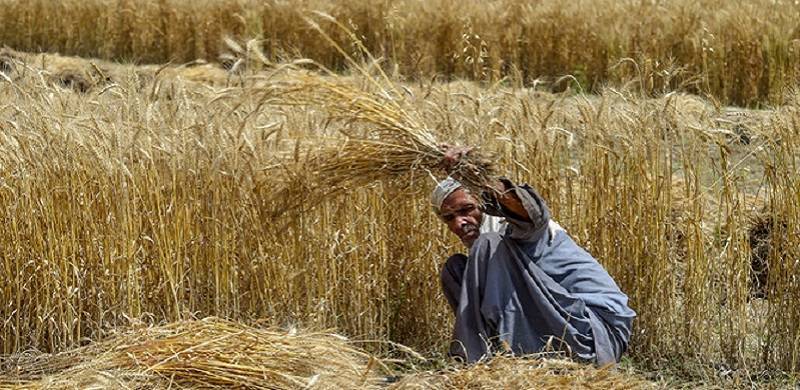Introduction
Wheat is Pakistan’s staple food crop, accounting for over 60% of caloric intake for the population and contributing significantly to rural livelihoods. Yet in 2024–25, Pakistan is confronting a severe wheat crisis, marked by reduced production, soaring prices, and food insecurity for vulnerable households. This article explores the underlying causes, socioeconomic consequences, and policy gaps, offering data-backed insights and recommendations.
📉 Wheat Production Trends
According to the Pakistan Bureau of Statistics and Agriculture Statistics of Pakistan, wheat production in 2023–24 stood at approximately 27.5 million tons, below the national requirement of 30 million tons. In 2024–25, early estimates indicate further shortfalls due to climatic and structural challenges.
| Year | Area (Million Hectares) | Yield (Kg/Ha) | Production (Million Tons) |
|---|---|---|---|
| 2022–23 | 9.2 | 2,920 | 26.4 |
| 2023–24 | 9.0 | 3,050 | 27.5 |
| 2024–25* | 8.8 | 2,850 | ~25.1 |
*Provisional estimates based on provincial reports and delayed sowing patterns.
🌦️ Key Causes of the Wheat Crisis
1. Climate Change and Extreme Weather
-
Unseasonal rains, hailstorms, and prolonged cold spells during March–April 2024 led to wheat lodging and fungal infections, significantly lowering yields.
-
The frequency of climate shocks has increased, with erratic monsoon patterns affecting sowing and harvesting cycles.
2. Delayed Sowing and Input Shortages
-
Late availability of certified seeds and high fertilizer prices (especially DAP and Urea) discouraged optimal sowing practices.
-
According to FAO and PARC data, wheat sowing was delayed in parts of Sindh and southern Punjab due to flood residue and waterlogging.
3. Poor Procurement Policies
-
In 2024, the government delayed procurement drives and announced inconsistent support prices, confusing farmers and discouraging surplus sales.
-
Inter-provincial tensions over wheat transport and smuggling across borders further reduced available stocks.
4. Market Hoarding and Smuggling
-
Flour mills and private traders hoarded supplies anticipating price hikes.
-
Reports from border districts in Balochistan and KP show wheat smuggling to Afghanistan and Iran, exacerbating local shortages.
📊 Socioeconomic Impacts
🌾 Food Insecurity
-
Wheat flour prices rose from Rs. 125/kg in early 2024 to Rs. 175/kg by April 2025 in major cities like Karachi, Lahore, and Quetta.
-
Poor households are forced to reduce meal frequency and quality, increasing malnutrition risks, especially among children.
👨🌾 Farmer Vulnerability
-
Smallholders, unable to afford high input costs or access markets, are falling into debt cycles and shifting away from wheat to lower-input crops like gram or fodder.
🛒 Urban Unrest
-
In March 2025, protests broke out in parts of Sindh and Balochistan over non-availability of flour in utility stores.
-
Social protection systems like the Ehsaas Rashan Program are under strain.
🧠 Policy Gaps
-
Lack of strategic reserves: Government buffer stocks are inadequate to handle supply shocks.
-
Inefficient forecasting: There’s a poor coordination mechanism between meteorological services and provincial agriculture departments.
-
Weak enforcement: Anti-smuggling and anti-hoarding laws are not effectively implemented.
✅ Policy Recommendations
Short-Term
-
Immediate release of wheat reserves and price subsidies to control inflation.
-
Strict monitoring of wheat hoarding and smuggling with inter-agency coordination.
-
Enhanced procurement efforts through mobile procurement units in rural areas.
Medium-Term
-
Encourage climate-resilient wheat varieties and ensure timely input distribution.
-
Invest in satellite-based early warning systems for yield estimation.
-
Rehabilitate canal and groundwater systems to ensure irrigation at critical crop stages.
Long-Term
-
Diversify Pakistan’s food basket through crop substitution and agroecological zoning.
-
Strengthen public-private partnerships for seed development and fertilizer distribution.
-
Reform the Minimum Support Price (MSP) system and ensure market transparency.
🔍 Conclusion
The wheat crisis of 2024–25 is not just a production issue—it reflects deeper governance, climate, and policy failures. Without urgent, holistic, and science-backed reforms, Pakistan’s food security will continue to be threatened. As the climate continues to change and resources shrink, building resilience in wheat production must be a national priority.
Wheat Production in Pakistan: A Comprehensive Comparative Analysis (1947–2023)

